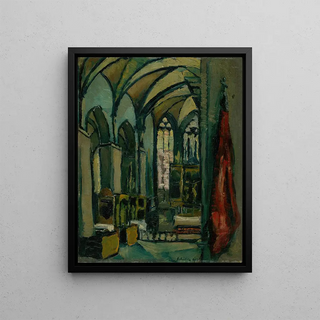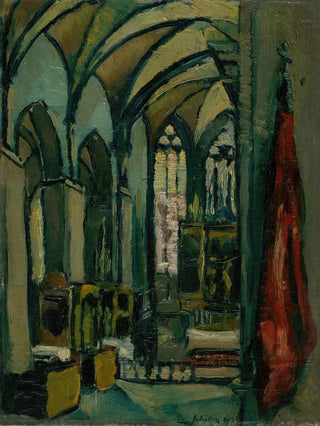Painting Inside the Church - Gejza Schiller | Art print


View from behind

Frame (optional)
Inside the church - Gejza Schiller – Captivating introduction
The artwork "Inside the church - Gejza Schiller" stands as an invitation to contemplation and reflection. In this scene, the artist manages to capture the very essence of a sacred space, where divine light seems to blend with majestic architecture. The viewer is transported into a universe where time appears suspended, where every detail is carefully orchestrated to evoke an atmosphere of serenity and reverence. The art print of this piece allows for rediscovering the beauty of sacred spaces and appreciating the delicacy of the play of light illuminating the vaults and frescoes. Through this representation, Gejza Schiller offers us an intimate and personal vision of a place rich in history and spirituality.
Style and uniqueness of the work
Gejza Schiller's style is distinguished by his ability to blend realism and impressionism. In "Inside the church," the artist uses subtle brushstrokes and delicate nuances to depict the reflections of light on surfaces. Every element, from wooden benches to stained glass windows, is treated with meticulous care that demonstrates a deep respect for religious architecture. The harmony of colors and the depth of shadows create an almost tangible atmosphere, where one can almost hear the whisper of prayers. The composition, in turn, guides the viewer's gaze toward the choir of the church, thus reinforcing the idea of a sacred space that is both open and protective. This play of perspective and light gives the work a spiritual dimension, inviting each person to personal introspection.
The artist and his influence
Gejza Schiller, an emblematic figure of sacred art, knew how to leave his mark on his era through an innovative approach to depicting places of worship. His work reflects a deep admiration for spirituality and architectural heritage. Influenced by the great masters of religious painting, he developed a style that is uniquely his own, combining tradition and modernity. Schiller does not merely reproduce church scenes; he makes them come alive, almost vibrate, thanks to a technique

Matte finish

View from behind

Frame (optional)
Inside the church - Gejza Schiller – Captivating introduction
The artwork "Inside the church - Gejza Schiller" stands as an invitation to contemplation and reflection. In this scene, the artist manages to capture the very essence of a sacred space, where divine light seems to blend with majestic architecture. The viewer is transported into a universe where time appears suspended, where every detail is carefully orchestrated to evoke an atmosphere of serenity and reverence. The art print of this piece allows for rediscovering the beauty of sacred spaces and appreciating the delicacy of the play of light illuminating the vaults and frescoes. Through this representation, Gejza Schiller offers us an intimate and personal vision of a place rich in history and spirituality.
Style and uniqueness of the work
Gejza Schiller's style is distinguished by his ability to blend realism and impressionism. In "Inside the church," the artist uses subtle brushstrokes and delicate nuances to depict the reflections of light on surfaces. Every element, from wooden benches to stained glass windows, is treated with meticulous care that demonstrates a deep respect for religious architecture. The harmony of colors and the depth of shadows create an almost tangible atmosphere, where one can almost hear the whisper of prayers. The composition, in turn, guides the viewer's gaze toward the choir of the church, thus reinforcing the idea of a sacred space that is both open and protective. This play of perspective and light gives the work a spiritual dimension, inviting each person to personal introspection.
The artist and his influence
Gejza Schiller, an emblematic figure of sacred art, knew how to leave his mark on his era through an innovative approach to depicting places of worship. His work reflects a deep admiration for spirituality and architectural heritage. Influenced by the great masters of religious painting, he developed a style that is uniquely his own, combining tradition and modernity. Schiller does not merely reproduce church scenes; he makes them come alive, almost vibrate, thanks to a technique
12,34 €






